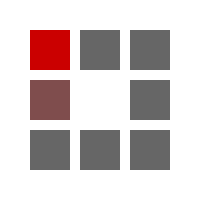This Insight is both an article and a video
This article has many details about Resolve’s native mapping capabilities and the expansion to Tangent control surfaces due to Tangent’s new “Warp Engine” interface-to-control-surface software mapper. It also explains the rationale for using the Warp Engine with Tangent panels instead of the Blackmagic Resolve-specific control surfaces. It also shows how I’ve started mapping my Tangent Elements to DaVinci Resolve 19.
For more details on the Tangent Elements, read Patrick’s unboxing Insight or his Getting Started Insight, which were written when these panels were in their heyday for DaVinci Resolve users.
About the embedded video
In addition to the article, there’s a 15-minute video showing how I’ve mapped a full set of Tangent Elements to Resolve 19. You’ll see the Warp Engine capabilities in action, controlling the HDR Wheels and the Resolve 19 Color Slice panels while I’m grading a shot – without ever touching a mouse. At the end, you’ll get a quick demo showing how simple it is to map a Tangent control surface using the Warp Engine app.
Is it time to dust off (or buy) your trusty Tangent Element control surfaces when working with DaVinci Resolve?
In this Insight I’m looking at a new software extension to the Tangent Hub, the Warp Engine. Here’s how Tangent explains it on their website:
The latest release of the Tangent Hub now has an updated Warp Engine with a record feature. So you no longer need to write scripts by hand. Warp Engine allows you to map any control, on any of your Tangent panels, to any application. This is done through assigning scripts to controls to emulate mouse clicks, drags, scrolls and keypresses.
How good is Resolve’s native mapping for the Tangent control surfaces?
Let’s begin this Insight by commenting on DaVinci Resolve’s current native mapping for the Tangent Element panels (their other, smaller panels are similarly mapped). These mappings date from Resolve 12’ish or so.
Member Content
Sorry... the rest of this content is for members only. You'll need to login or Join Now to continue (your career will thank you!).
Need more information about our memberships? Click to learn more.
Get Answers, Join Now!Member Login



